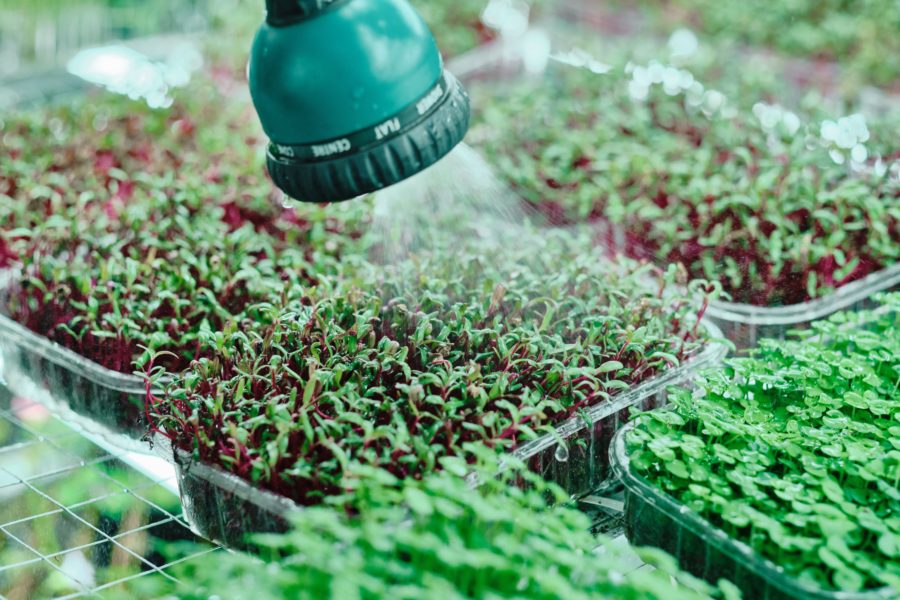Attic rain, also known as attic condensation or sweating, refers to the formation of moisture in the attic space of a home. This occurs when warm, humid air from the living spaces below comes into contact with the roof and attic’s cooler surface. This causes the air’s moisture to condense. It can lead to water damage, mold and mildew growth, and reduced insulation effectiveness. Therefore, it is important to understand the causes of attic rain and to take steps to prevent it from protecting your home’s integrity.
Why it is important to address attic rain
It is important to address attic rain because it can cause significant damage to your home if left unaddressed. Some of the consequences of attic rain include:
- Damage to the roof and attic structure: Water accumulation in the attic can cause damage to the roof and attic structure, including rot and deterioration of the materials. This can compromise the integrity of the roof and attic and may require costly repairs.
- Damage to the home’s interior: Attic rain can lead to mold and mildew, which can have serious health implications. It can also cause water damage to the home’s interior, which can be costly to repair.
- High energy bills: Attic rain can reduce insulation effectiveness, leading to higher energy bills. It is because your heating and cooling systems have to work harder to maintain a comfortable temperature in your home.
By addressing attic rain, you can prevent these problems and protect the integrity of your home. This may involve improving ventilation, cleaning and maintaining gutters, removing ice dams, and repairing any roof or attic structure damage. By this, you can save yourself a lot of time, money, and hassle in the long run.
Causes of attic rain
Poor roof ventilation
Poor roof ventilation is one of the main causes of attic rain. When the attic is poorly ventilated, warm, humid air from the living spaces below can become trapped. It can come into contact with the cooler surface of the roof and attic. This can cause the moisture in the air to condense, leading to the formation of moisture in the attic.
Clogged Gutters
Clogged gutters can also cause attic rain. Water cannot properly drain off the roof when gutters become clogged with debris, such as leaves and twigs. This can cause water to back up and leak into the attic, forming moisture.
Ice dams
Ice dams can also cause attic rain. It occur when snow on the roof melts and flows down to the eaves, where it freezes again due to the colder temperatures. As more snow melts and flows down the roof, it becomes trapped behind the ice dam, causing it to back up and leak into the attic.
Consequences of attic rain
Damage to the roof and attic structure
One of the consequences of attic rain is damage to the roof and attic structure. When moisture accumulates in the attic, it can cause rot and deterioration of the roof and attic materials, such as the rafters, sheathing, and insulation. This can compromise the integrity of the roof and attic and may require costly repairs.
Damage to the interior of the home
Another consequence of attic rain is damage to the interior of the home. When moisture accumulates in the attic, it can leak into the living spaces below, causing water damage to walls, ceilings, and other surfaces. This can be costly to repair and create an environment conducive to the growth of mold and mildew.
Mold and mildew can have serious health implications, as they can cause respiratory problems and other health issues. Therefore, it is important to address attic rain promptly to prevent mold and mildew growth and protect your family’s health.
Increased energy bills due to loss of insulation effectiveness
Attic rain can also lead to increased energy bills due to the loss of insulation effectiveness. When moisture accumulates in the attic, it can reduce the effectiveness of insulation. As the moisture can absorb heat and interfere with the insulation’s ability to keep your home warm in the winter and cool in the summer. This can cause your heating and cooling systems to work harder to maintain a comfortable temperature in your home, leading to higher energy bills.
Prevention and solutions
Ensure proper roof ventilation
Ensuring proper roof ventilation is an important step in preventing attic rain. Proper ventilation helps to prevent the buildup of humid air in the attic and allows it to escape, reducing the risk of condensation.
There are several ways to improve roof ventilation, including:
- Adding vents: Adding additional vents, such as soffit vents, ridge vents, or gable vents, can help to improve ventilation in the attic.
- Increasing the size of existing vents: If your existing vents are small, consider increasing their size to improve ventilation.
- Ensuring that vents are not blocked: Make sure that vents are not blocked by debris or other obstructions, as this can interfere with the airflow.
- Insulating the attic: Proper insulation can help to reduce the temperature difference between the living spaces below and the attic, reducing the risk of condensation.
By taking these steps, you can improve the ventilation in your attic and reduce the risk of attic rain. It is important to regularly inspect and maintain your ventilation system to ensure that it is functioning correctly.
Clean and maintain gutters regularly
Cleaning and maintaining your gutters regularly is another important step in preventing attic rain. Clogged drains can cause water to back up and leak into the attic, forming moisture.
To clean and maintain your gutters:
- Remove debris: Use a ladder or gutter cleaning tool to remove leaves, twigs, and other debris from the gutters.
- Flush the gutters: Use a hose to flush the gutters and downspouts, ensuring that water is able to flow freely through them.
- Check for leaks: Inspect the gutters for signs of leaks or damage, and repair any problems as necessary.
- Realign the gutters: If the gutters are not properly aligned, water may not drain properly. Use a level to ensure that the gutters are straight and properly angled towards the downspouts.
Cleaning and maintaining your gutters regularly can help reduce the risk of attic rain. Inspecting and maintaining your gutters at least once a year, or more frequently if necessary, is a good idea.
Remove ice dams promptly
Removing ice dams promptly is an important step in preventing attic rain. Ice dams can cause water to back up and leak into the attic, forming moisture.
To remove an ice dam:
- Use a roof rake: Gently remove the snow from the roof using a roof rake, starting at the eaves and working your way up. Be careful not to damage the roof shingles.
- Use heat to melt the ice: You can use a heating cable, a roof de-icing product, or a portable heater to melt the ice dam. Follow the manufacturer’s instructions and use caution when using any heat source.
- Hire a professional: If you are unsure how to safely remove an ice dam, consider hiring a professional to do it for you.
Removing ice dams promptly can help prevent water from backing up and leaking into the attic, reducing the risk of attic rain. Therefore, it is important to address ice dams as soon as they are noticed in order to prevent further damage.
Repair any damage to the roof or attic structure
Repairing any roof or attic structure damage is an important step in preventing attic rain. When the roof or attic is damaged, it is more vulnerable to the formation of moisture, which can lead to further damage.
To repair damage to the roof or attic structure:
- Identify the problem: Inspect the roof and attic for signs of damage, such as leaks, rot, or deterioration of materials.
- Make temporary repairs: If you cannot make permanent repairs immediately, consider making quick repairs to prevent further damage. For example, you may need to place a tarp over a hole in the roof to prevent water from entering the attic.
- Hire a professional: If you are unsure how to repair the damage or if the damage is extensive, consider hiring a professional. A professional can assess the damage and recommend the appropriate repairs.
You can help prevent further damage and reduce the risk of attic rain by repairing any roof or attic structure damage. It is important to address any damage promptly in order to prevent costly repairs in the future.
Conclusion
In conclusion, attic rain is a common problem that can cause significant damage to a home if left unaddressed. You can protect your home’s integrity and prevent costly damage with the proper steps. It is important to address attic rain promptly in order to avoid further damage and maintain the health and safety of your home.


